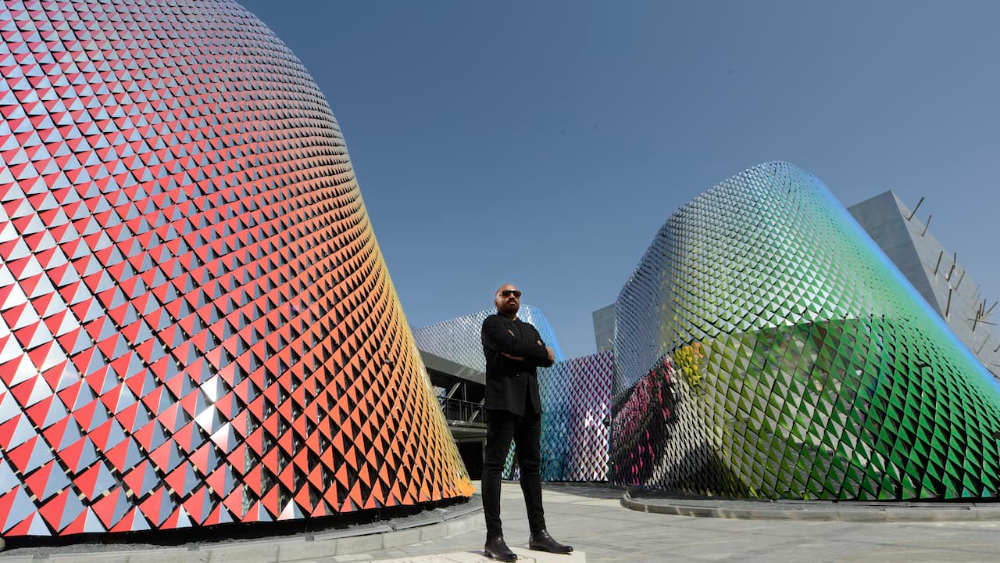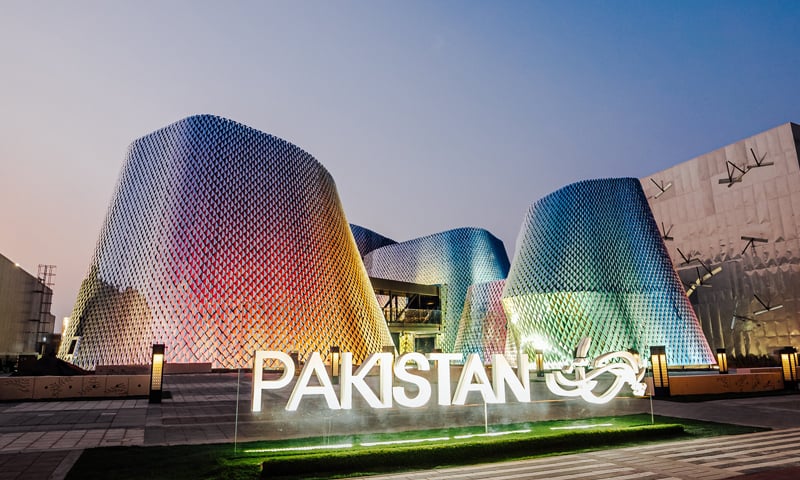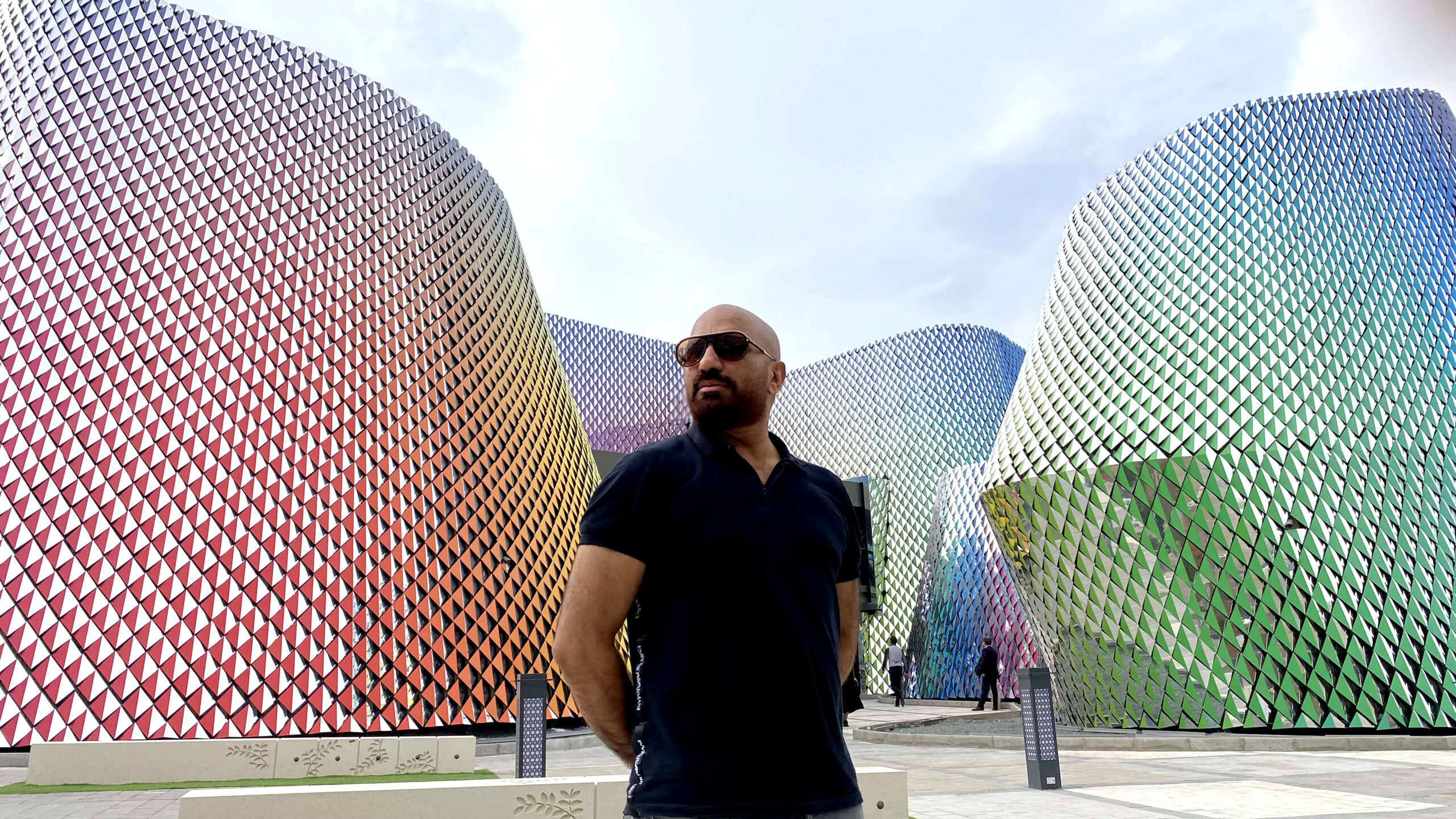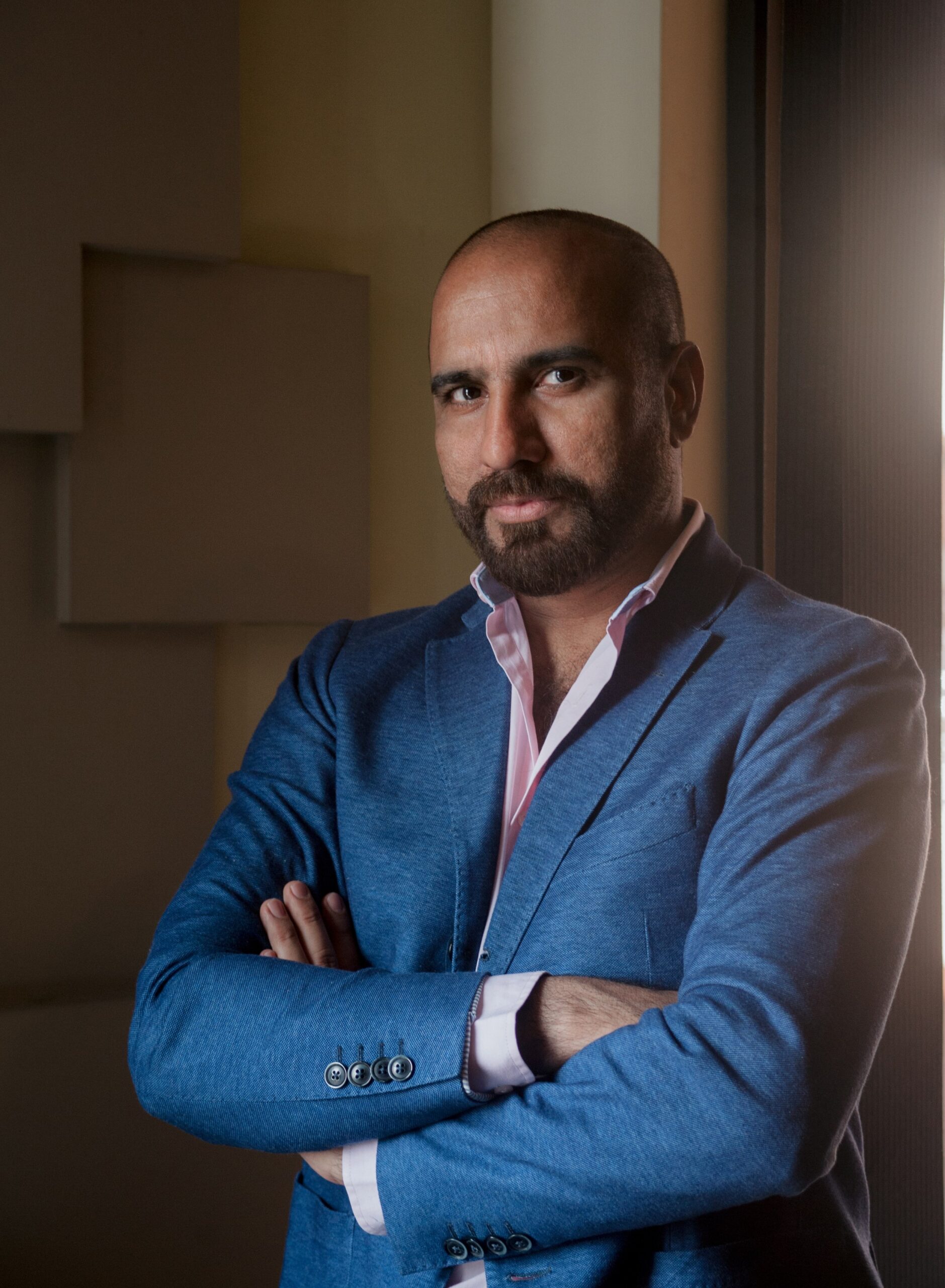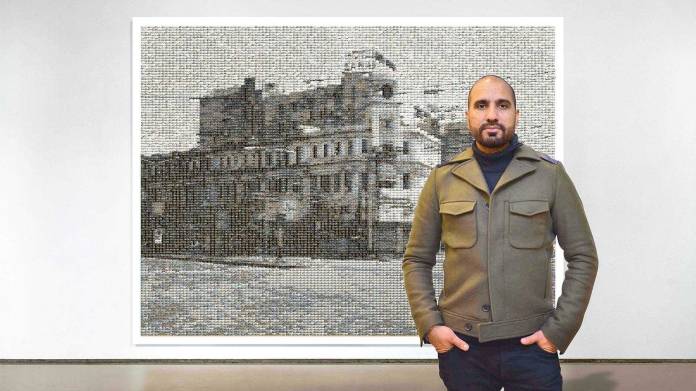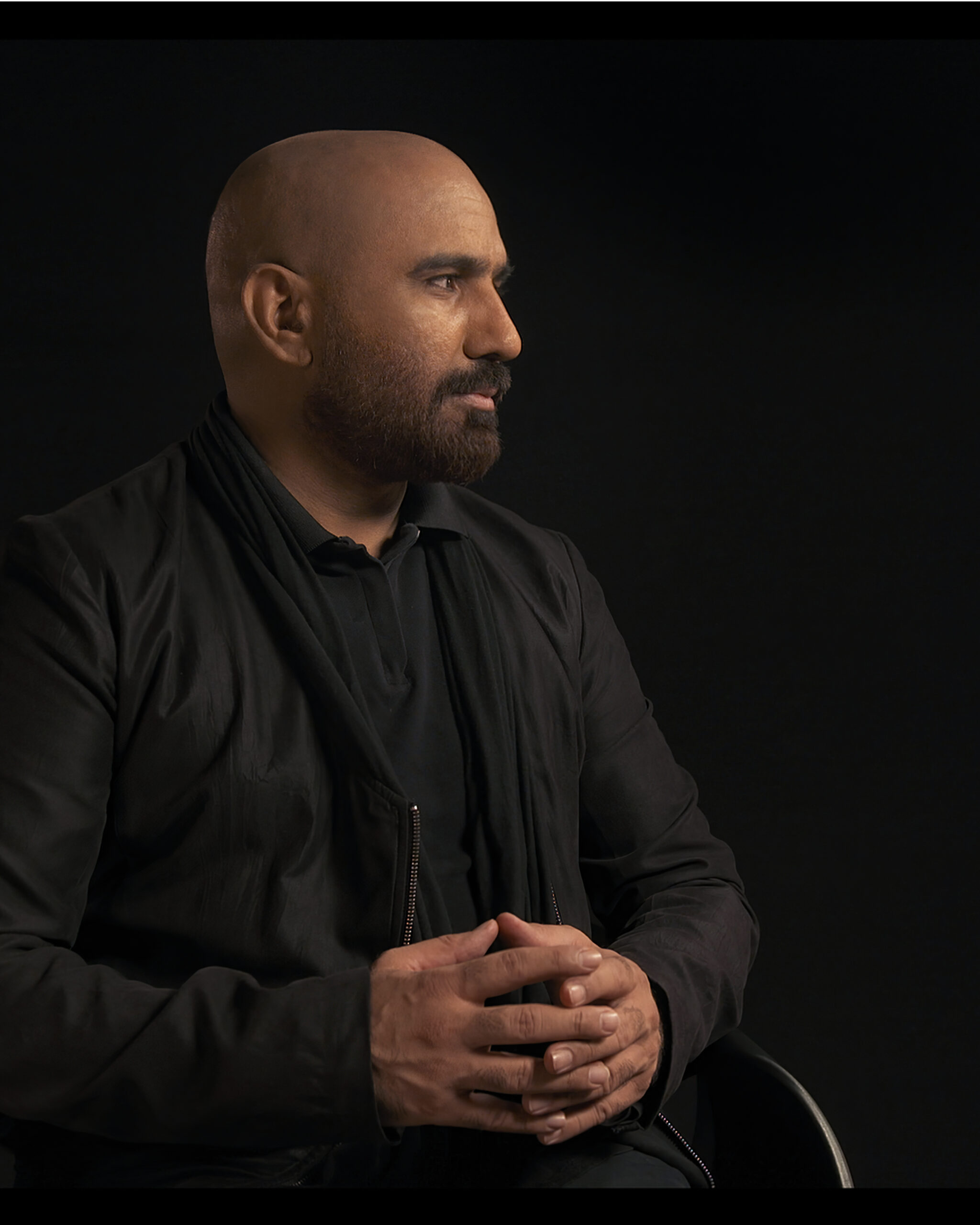Every nation admires its heroes in various fields. For instance, our heroes in sports, science, and from our political history, who have elevated Pakistan to a prominent place among the nations. Writers and artists are performing the same task, and now we have a new hero, a visual artist, who recently made Pakistan proud at the ongoing Dubai Expo 2020. His creation, the exterior for the Pakistan Pavilion earned the top 5 highest positions during an international event with countries from all over the world participating with their national pavilions.
One of the most visited and popular ones, the Pakistan Pavilion is also a testimony of how Rashid Rana, the leading figure in the art world today, created a work appreciated by professionals for its unique artistic solution, innovation, and imagination; and is the equally loved by all those who witnessed it physically or viewed it on social media. Rashid Rana’s artistic intervention ‘Unity of All That Appears’, offers something to everyone who has encountered it.
Undoubtedly it has become the most significant symbol of Pakistan. It is a combination of 24,000 unique panels, each of a different shade, to emerge into a large structure, which appears to change its formation, color, tone, and surface. A pictorially magical and sensory miracle that Rana performed with his unmistakable originality of thought and deep-rooted aesthetic concerns, reflected in this monumental art piece. In its nature, construction, and concept, this artistic intervention represents the diversity and multiplicity of Pakistan, a nation of varying faiths, ethnicities, climates, geography, languages, and cultures.
With the captivating images of the Pavilion making rounds on social, electronic, and print media platforms, Rashid Rana is gaining wide public praise for his work at the Pakistan Pavilion, which has quickly become a familiar and much talked about visual in Pakistan. Rashid Rana, through this extraordinary work, has been making news in global media, thus bringing pride and prestige to Pakistan and its creativity.
For many Rashid Rana is a new name but for those who follow developments of Art, they are familiar with his illustrious international career full of achievements that have put Pakistan on the global map as far as the field of visual arts is concerned. Working with a kaleidoscope of materials from stainless steel sculptures, video installations, photo sculptures to photo mosaics, Rana is known for his unique strategies in art-making. In the past, Rana’s work has been included in more than 80 exhibitions in galleries and museums across the globe, from Karachi to Hong Kong, Manchester, Berlin, and New York. He is the first living artist to have a “survey solo exhibition” at the prestigious Muse’ Guimet Paris. In 2015, his work was included in a landmark exhibition titled ‘The Treasures of the World’ from the British Museum, which was held at the National Museum of Singapore. Including Rana’s work, the exhibit is comprised of 239 historical objects from the history of humankind. The exhibition was dubbed by media as that “Human History in 239 objects”.
In 2006 Rana’s work was included in an exhibition titled “Grid < >Matrix” held at the Kemper Art Museum, St Louis, alongside some of the great names of the 20th and 21st century such as Andy Warhol, Piet Mondrian, Robert Rauschenberg, and Andreas Gursky.
Rashid Rana’s mid-career retrospective exhibition at the Mohatta Palace Museum, Karachi in 2013, is the largest exhibition by a single artist ever held in Pakistan.
His artworks are part of major private and public collections including the Metropolitan Museum New York, British Museum London, and Fukuoka Museum Japan.
Amongst his various international accolades, he has also received the Game Changer Asia Art Award by the Asia Society in 2017 and was awarded International Artist of the Year by SAVAC Canada in 2003. Rashid Rana also conferred Sitara-e-Imtiaz earlier this year, which is amongst the highest civilian awards in Pakistan.
GQ Magazine India included him in a list of 10 Pakistanis who have influenced Indian pop culture in their respective disciplines (The list includes Imran Khan, Abida Perveen, Nusrat Fateh Ali Khan, Nazia Zohaib, and Fawad Khan).
Primarily known for his art practice, Rashid Rana in fact occupies simultaneous profiles of being an artist, curator, academic, and visionary. It is this openness to the possibilities that, parallel to his iconic art practice, Rana has coined the term ‘EART’ to describe moments of self-expression beyond the Arts: ways of thinking, being, and acting creatively in real life, be it social media or real estate development or a chain of grocery stores. This project for which Rashid has worked with several contributors and collaborators is centered around a manifesto, titled “EART: a manifesto of possibilism”
Rana has also been part of a unique collaboration with legendary musician and composer Steve Reich and renowned choreographer Wayne McGregor resulting in a piece called Multiverse for the Royal Opera House London.
In addition to his iconic art practice, he has also contributed immensely to art academia in Pakistan. He is the founding faculty member and currently the Dean of the School of Visual Arts and Design at BNU, Lahore.
The use of new media by an entire generation of young Pakistani artists is a part of his legacy as an artist and an educator.



